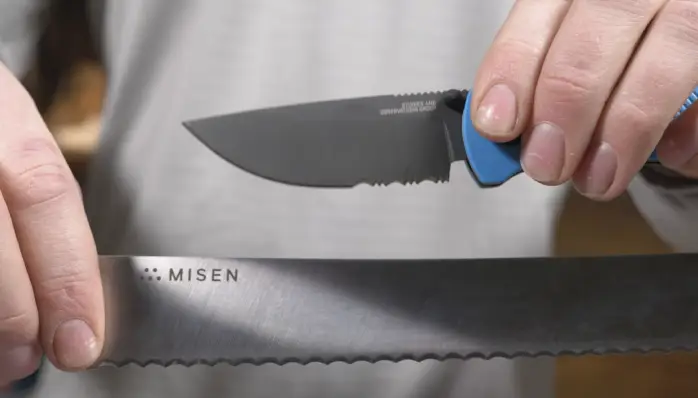Does Knife Conduct Heat and Electricity
When it comes to kitchen knives, a lot of things go into making them good quality. But did you know that knives can also conduct heat and electricity? In this blog post, we’re going to take a closer look at what makes knives heat and electricity conductors, also, we’ll explore the different ways knives can be used to generate heat and electricity. So if you’re curious about how knives work or just looking for some interesting reading material, stay tuned!
How Does Knife Conduct Heat and Electricity?
Like any other material, a knife (metal/steel) is made of atoms. These atoms are constantly moving and bumping into each other. When they do, they transfer some of their energy to the next atom, and so on. This is how heat and electricity are conducted through materials like metal. So when you’re using a knife for cooking, the atoms in the blade transfer heat to the food you’re cutting.
The same thing happens with electricity. When electrons flow through a material like metal, they can bump into the atoms and make them move. This is how an electrical current is generated. So if you’re using a knife to cut through electrical wires, the electrons will flow through the blade and cause a current.
Ways to Use a Knife to Generate Heat or Electricity?
There are many different reasons you might want to use a knife to generate heat or electricity. For example, if you’re camping and don’t have access to a stove, you can use a knife to start a fire. All you need is a piece of flint and some Tinder. Strike the flint against the blade of the knife, and the sparks will ignite the tinder, starting your fire.
Another way you can generate heat or electricity by using a knife is by using it as a conductor. It means you can use the blade to connect two pieces of metal, allowing the electrons to flow between them. This can be used to create a circuit, which can then be used to power devices like flashlights or radios.
Finally, you can also use a knife as a compass. If you’re lost in the wilderness and don’t have a compass, you can make one by using a knife and a piece of string. Tie the string to the blade of the knife, and then float the knife in a body of water. The string will point in a north-south direction, which will help you orient yourself and find your way back to safety.
Risks Associated with Knife Conductivity
Now that we know how and why knives conduct heat and electricity, it’s important to understand the risks associated with this.
First, if you’re using a knife to start a fire, it’s essential to be careful. The sparks from the knife can easily ignite things like paper or leaves, which could start a forest fire. So make sure you’re in a safe area before using your knife to start a fire.
Secondly, if you’re using a knife as a conductor, it’s essential to be aware of the potential dangers. If you’re not careful, you could easily electrocute yourself. So make sure you know what you’re doing before attempting to use a knife as a conductor.
Bottom Line
So that’s all! Now you know a little bit more about how knives conduct heat and electricity. So the next time you use a knife, think about the science behind it! And if you ever find yourself in a situation where you need to generate heat or electricity, now you know how to do it with a knife. Stay safe, and happy cooking!
Related topic: Do Knife Sharpeners Ruin Knives?






